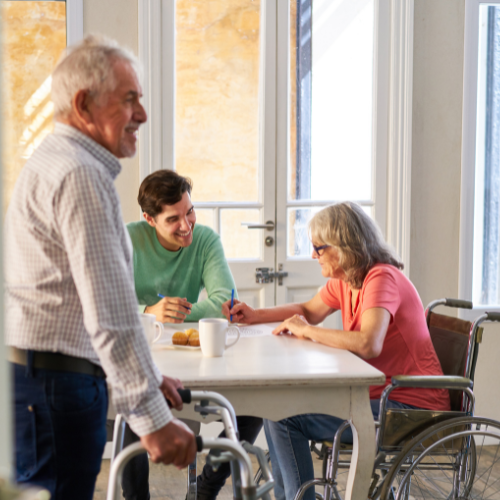
Understanding Loneliness in an Assisted Living Community
Moving into an assisted living community near South Pasadena can be a significant transition for many seniors. While these communities are designed to provide support and care, the change in environment and routine can sometimes lead to feelings of loneliness and isolation. Loneliness is a common issue among older adults, and it can have a profound impact on their overall well-being.
Assisted living communities are often designed to promote social interaction and engagement, but the reality is that some residents may struggle to form meaningful connections. This can be due to various factors, such as physical limitations, cognitive decline, or simply the challenge of adjusting to a new social setting. Regardless of the underlying cause, loneliness in assisted living communities is a concern that deserves attention.
The Impact of Loneliness on Seniors’ Well-Being
Loneliness can have far-reaching consequences for the physical and emotional health of seniors in assisted living communities. Studies have shown that prolonged loneliness can lead to a range of negative outcomes, including:
- Increased Risk of Depression and Anxiety: Feelings of isolation and lack of social support can contribute to the development of mental health issues, such as depression and anxiety.
- Reduced Physical Health: Loneliness has been linked to a higher risk of chronic conditions, such as heart disease, stroke, and dementia, as well as a weakened immune system.
- Cognitive Decline: Social isolation and lack of engagement can accelerate cognitive decline and increase the risk of developing conditions like Alzheimer’s disease.
- Decreased Quality of Life: Loneliness can negatively impact an individual’s overall well-being, leading to a diminished quality of life and reduced life satisfaction.
Benefits of Creating Connections in an Assisted Living Community
Fostering connections and social engagement within an assisted living community near South Pasadena can provide a range of benefits for residents, including:
- Improved Mental Health: Engaging in social activities and building meaningful relationships can help reduce loneliness and depression while promoting a sense of purpose and belonging.
- Enhanced Physical Health: Social interactions and participation in group activities can encourage physical activity, which is essential for maintaining overall health and well-being.
- Increased Cognitive Stimulation: Engaging in social and intellectual activities can help maintain cognitive function and delay the onset of cognitive decline.
- Greater Life Satisfaction: When residents feel connected to their community and have social support, they are more likely to report higher life satisfaction and overall well-being.
Tips for Fostering Connections in an Assisted Living Community
- Group Activities and Social Events: Group activities, such as game nights, arts and crafts classes, or outings to local attractions, encourage residents to interact and form new friendships.
- Encourage Involvement: Empower your loved one to take an active role in participating in community activities. This can foster a sense of community and engagement.
- Leverage Technology: Utilize technology, such as video conferencing or social media platforms, to help residents stay connected with family and friends outside the community.
The Role of Technology in Alleviating Loneliness
In today’s digital age, technology can play a crucial role in helping seniors in assisted living communities overcome loneliness and stay connected with loved ones. Here are some ways technology can be leveraged to address this challenge:
- Video Conferencing: Platforms like Zoom, Skype, or FaceTime allow residents to connect with family and friends virtually, fostering meaningful face-to-face interactions despite physical distance.
- Social Media Platforms: Platforms such as Facebook, Instagram, or WhatsApp can help residents stay engaged with their social networks, share updates, and participate in online communities.
- Assistive Devices: Devices like tablets, smartphones, or voice-activated assistants can help residents access information, entertainment, and communication tools with greater ease.
- Telehealth Services: Video consultations and remote monitoring can help residents access healthcare services, reducing the need for in-person visits and promoting security and support.
Embracing Connection in Assisted Living Communities
Creating a culture of connection and community within an assisted living setting is essential for supporting the overall well-being of residents. By fostering meaningful relationships, encouraging social engagement, and leveraging technology, you can help alleviate the negative impacts of loneliness and ensure that your loved ones thrive in their new living environment.
Remember, everyone is unique, with their own needs, preferences, and life experiences. By taking a personalized approach and empowering them to play an active role in their community, you can help them build the connections they need to live fulfilling and enriched lives.
